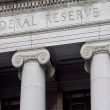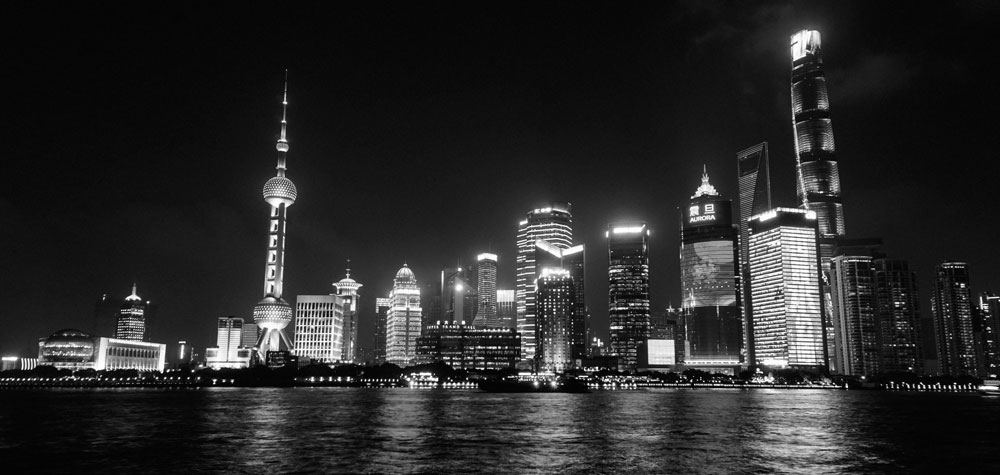by Kara Lilly, Investment Strategist, Mawer Investment Management, via The Art of Boring Blog
Myopia, or nearsightedness, is a refractive error of the eye that causes distant objects to appear blurry, while close objects remain clear. A similar phenomenon can happen in investing: sometimes we fail to see certain risks and opportunities because they seem “far away” either in time or geography. Lately, the investing myopia on my mind has been around China.
[Tweet "Chinese leadership's next challenge: converting China into a high-income country. @karelilly"]This musing began a few weeks ago when our team was discussing the questions that have been top of mind for clients. Unsurprisingly, NAFTA, market corrections, and Bitcoin topped the list. China did not. This did surprise me as there is a great deal happening in China beyond trade disputes with Trump and diplomatic efforts around North Korea. The world’s second largest economy is undergoing huge economic, financial, and technological transformations. And I dare say, these trends are as or more important to Canadian investors than, say, Bitcoin.
Why pay attention to China? Well, first, the country is a hotbed of disruptive companies that are quickly becoming technology leaders—arguably, the most technological progress outside of Silicon Valley is now happening in China. Second, there are many attractive investment opportunities in China, far more than our team has found historically. Third, the country is going through a major economic transition which may or may not result in some sort of banking crisis, which, given China’s role as the second largest economy in the world, would almost certainly have an impact on global equity and bond markets. And finally, as Canadians, China’s economic health has an outsized influence on our collective well-being through commodity prices.
Clearly, many of the old stories surrounding China are becoming—or are—obsolete. New ones are emerging. China’s economy is very different than it used to be, and this shift, as well as some of the trends occurring there, are worthwhile to understand. We’d be wise to pay attention.
Not the China you used to know
As a starting point, we must acknowledge the enormous economic shift that has taken place over the last few decades in China. Many Canadians still tend to associate China’s economy with the cheap manufacturing model that it made famous, encapsulated in the mantra of “Made in China.” But this association hardly captures what the Chinese economy looks like today.
Let’s take a quick walk through those last few decades. The Communist Party of China (CPC) became the ruling political party of China in 1949, when the communists drove the nationalists from the mainland after the Chinese Civil War. Under the leadership of Mao Zedong, the state became the central allocator of capital and resources, notably through consolidating industry under state ownership and farms into collectives. Markets were effectively eliminated. The costs of Mao’s ‘Great Leap Forward’ and ‘Cultural Revolution’ were great—the mass mobilization of labour in efforts to increase industrial and agricultural output contributed to the starvation of millions, corrosive poverty, and the loss of a generation of Chinese intelligentsia.
With reformist and pragmatist Deng Xiaoping as China’s next ‘paramount leader’ after Mao’s death, ideology became less of a focus. Deng was more interested in whatever path could restore China’s wealth and power to the levels it had once attained during its imperial dynasties. He saw the role that markets could play in the economy and, in 1978, initiated the ‘Reform and Opening’ program, which actively shifted China away from the Soviet-styled planned economy that had failed as a development model. What emerged can be called market socialism—an economy whereby capital allocation occurs through the invisible hand of markets, guided by the (strong) visible hand of the government.
Of course, changes did not happen overnight. After a revolution that had been dramatic, painful, and chaotic, the reform program took an approach that has since characterized the way the current national government operates: strategic, cautious, sequenced, and controlled. Economic and financial reforms were implemented gradually in the 1980s, gaining greater steam in the 1990s, and were often piloted before implementation nationwide. And they were remarkably successful. Despite a banking crisis that occurred in the 1990s, China grew by ~9% per annum between 1984 and 2014, while per capita GDP grew over 300%.1
What was the formula that permitted this growth? Turn a planned economy into a hybrid one. Invest heavily into capital, build infrastructure, and export to the rest of the world. Develop capital-intensive industries like coal and steel, which could create jobs and foster national growth, while overlooking environmental costs and wealth inequity for the time being. The goal of this path was to foster full employment, establish public infrastructure, and provide housing access for everyone. Economic stability would double as political stability for the CPC.
But even that path has changed. Chinese leadership has turned towards the next challenge: converting China into a high-income country. In the last decade, they have emphasized domestic consumption and services in the economy, guided the country away from traditional industries (which have recently been in overcapacity), and invested heavily into technologies. And while change has been gradual—China is a massive tanker ship that turns slowly—it has nevertheless been coming.
Not crediting China’s new developmental reality, or underestimating the global leadership role to which the Chinese seem to aspire, could mean missing out on potential investment opportunities as well as risks that exist for non-Chinese competitors. Additionally, the current shifts are creating macroeconomic risks that Chinese leadership must somehow overcome. Some of these hurdles, if ineptly vaulted, could prove problematic to global markets at large.
A Chinese Silicon Valley?
Having established the path that China has taken, there are two themes we can now highlight that many investors seem to overlook. The first is technology. For years, the Chinese government has sent thousands of individuals overseas to learn world-class processes and bring them back to China. This voracious appetite for learning has clearly served the country well in its development over time. But what is occurring now goes far beyond merely learning from the rest of the world.
My colleague and equity analyst, Justin Anderson, recently travelled to China to better understand some of China’s technological progress. One evening in Beijing, Justin visited a supermarket to observe the local grocer experience. What he saw left him impressed. In this particular store, customers could order any product online and arrange for either delivery or pickup options. Moreover, they could scan any product to learn more about what they were buying. Imagine being in Wholefoods and scanning the beef you’re about to buy. What farm did it come from? What grains was it fed? Was the beef treated humanely? Most of us would agree this would be a step up from the typical North American experience.
The grocery store that Justin visited was owned by Alibaba and is part of a new online-offline integration model. And beyond being a compelling retail offer in the Chinese market, it gives us a preview of what may one day come to grocers in North America. Indeed, this store was emblematic of a larger trend of “East leading West” that Justin noted on his trip. While in previous decades, Chinese firms may have needed to copy Western best practices, today, many Chinese businesses are embracing technology in a way that simply isn’t being done yet in North America. We can use these cues as investors.

Screenshot of the app for Alibaba’s supermarket, Hema. When you scan a QR code, it pulls up details on the order (in this case, which part of the cow the meat comes from and where the cows were raised, etc.)
As another example, mobile lifestyle and social media are more deeply embedded in Chinese society than in North America. Chinese citizens spend more time on their mobile phones than North Americans do, and they do more using these apps. For example, nearly 960 million2 people in China are on WeChat, the dominant social media network in China. WeChat is similar to Facebook, except it also facilitates payments: WeChat users can use the app to pay for things like cab rides or food. And because the network collects such rich data from its vast and active user base, the company that owns it, Tencent, has among the best competitive positions of any social media platform in the world (they have a data monopoly). In some ways, WeChat may point to what Western networks such as Facebook or Instagram could one day become.

Screenshot of WeChat’s wallet/linked bank account function.
It appears that in addition to a supportive government environment, there is a willingness among Chinese business leaders to experiment. As Justin puts it, it’s not that China is more ahead in terms of actual technology, it’s that companies are running experiments with existing technologies in ways that we aren’t seeing to the same degree in the West. Sort of like ancient Greece and Rome. Greece may have invented many of the technologies, philosophies, and even Gods that would eventually allow the Roman Empire to thrive—but Rome took the existing platform of innovation and ideas and made it their own (e.g. those aqueducts).
China’s progress makes sense given how the country has embraced markets within their unique political environment. It also makes sense given the scope of China’s ambitions. China does not see itself as a young country in its economic development, despite the tendency of the West to label it as “emerging.” It sees itself as an old-world power that once lost its way and is back on the road to greatness.
China’s debt challenge
The second major theme is China’s financial system. As previously mentioned, China is navigating a major economic transition. And it is doing so with a potentially beleaguered banking sector.
The short version of this story is that a lot of debt has built in China’s economy and we don’t know how much of that debt is bad. Estimates of bad debt in China vary widely. Some presume that the single-digit official numbers of non-performing loans (NPLs) are accurate, while others put the true number into the double-digits. And on top of concerns around existing bad debts, there are also those surrounding the levels they will inevitably grow to because of how much debt corporations have taken on in recent years and how the economy is shifting. The big question is how well the CPC will be able to manage the economy during a major national deleveraging program.
Here is some of what we do know: there has been significant credit growth over the last several years, and this credit may not have always been lent with sound underwriting practices. For example, we know that the government allocated 4 trillion yuan during the 2008 global financial crisis to prevent massive unemployment while China’s largest export customers in the West experienced a devastating banking crisis. This stimulus was largely accomplished by freeing/pressuring the banks to extend credit to local governments for infrastructure projects. A flood of money was released by the banks, mostly via three-year loans, to fund long-term projects that were hastily approved by the National Development and Reform Commission. Roads, railways, and other projects were approved with “little time for sober analysis.”3 The net result was that China’s economic growth for 2009 and 2010 was 10%—but who knows how many of these loans to local governments will sour in the fullness of time.
We also know that there have been significant loans underwritten to two potentially troublesome spots in the economy: 1) large industrial state-owned-enterprises that have been suffering from overcapacity, and 2) the hot real estate market. Given how pervasive overcapacity problems have been, is it likely that these bad loans have been properly recognized on the banks’ balance sheets? And after years of dramatic price increases, admission by the government of rampant speculation, and the occasional sign of fraudulent activity in the mortgage market, how sound are loans to the property market? And these questions don’t even consider the potential risks in China’s shadow banking sector, which is inextricably tied into the official banking sector.
The challenge is this: do current NPLs reflect current economic reality? And how will future bad debts grow? Since the global financial crisis, nonfinancial private credit-to-GDP has risen from around 150% to over 200% in China. Corporations and local governments have been the main recipients of this credit. What happens when, and if, the Chinese government finally makes good on its promise to liberalize interest rates and they rise? Chinese corporations have for years benefited from very low interest rates and have taken on a staggering amount of debt. At some point, this process simply becomes unsustainable.
As for predictions, the debate on how this will net out can be fierce. The China bears have been extremely skeptical about China’s financial system for years now. They look at a financial system blowup as matter of when, not if. Others are more sanguine. Many rightfully note that the CPC has historically been able to manage financial crises without the boat rocking too much (stability is important to the Party). They point to the creative manner with which the Party handled the recapitalization of the big banks in the late 90s, as well as China’s vast reserves and policy options, arguing that leadership is both aware and in control. To this, China bears counter that modern China is in a vastly different position than it was twenty years ago. They argue that when China last bailed out its banks, it had far less debt as a nation and was growing impressively, but now debt is dramatically higher and the country’s growth rate is weaker. They imply that China kicked the can down the road last time and got away with it—next time they might not be so lucky.
Why would any of this matter to investors who aren’t invested in China? While China’s banking system should theoretically remain only a domestic problem (and still might), there are important possible mechanisms for transmission to the rest of the world. For one, a financial crisis in China could put serious strain on the country’s ability to maintain its currency peg. Any big devaluation in the renminbi would be a stone thrown in the water with ripples effecting the global economy. Moreover, a slowdown in growth in China could easily ripple across the global economy, including an impact to commodities prices (hi, Canada). And even if fundamentally there were no lines of transmission, a financial crisis in China could spook equity markets and spoil an overall positive mood.
Final thoughts
Admittedly, these are only two trends occurring in what is ultimately a massive economy. And there are many individuals who are well-versed and aware of them. But for many Canadian investors, these trends are probably somewhat off-radar. It probably makes sense to get up to speed on them.
In so many areas of investing, it can be easy to become myopic. When a risk is a far away (geographically or in timing), it can seem fuzzy and less important. But this is often where we find an edge as investors. When it comes to China, there is plenty of news out there, but it often misses stories that would otherwise be relevant to investors. Moreover, many Canadians still carry old narratives around China. Reality may look quite different.
1 James Stent. China’s Banking Transformation: The Untold Story. Oxford University Press. 2016.
2 https://www.statista.com/statistics/255778/number-of-active-wechat-messenger-accounts/
3 James Stent. China’s Banking Transformation: The Untold Story. 2016. Oxford University Press. 2016.
This post was originally published at Mawer Investment Management















